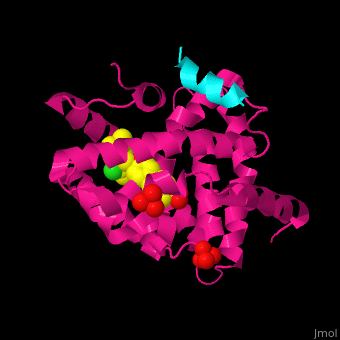Function
Bile acid receptor or farnesoid X receptor (FXR) binds bile acids, then translocates to the nucleus, forms a dimer and binds to hormone response elements. This causes up- or down-regulation of certain genes involved in cholesterol metabolism, lipid homeostasis and absorption of fats and vitamins. FXR ligand-binding domain (LBD) binds chenodeoxycholic acid (CDC), lithocholic acid and deoxycholic acid. [1]
Disease
FXR is involved in pathophysiology of inflammatory bowel disease, colorectal cancer and type II diabetes.
Relevance
FXR and other bile acid receptors are targets for the treatment of dyslipidemia, diabetes and cardiovascular disease.
3D structures of bile acid receptor
Updated on 18-November-2015
hFXR LBD
1osh, 3fli, 3l1b – hFXR LBD + non-steroidal agonist - human
1osv – hFXR LBD + CDC derivative + nuclear receptor coactivator 2 peptide
4ii6, 4wvd - hFXR LBD + nuclear receptor corepressor peptide
3bej, 3dct, 3dcu, 3hc5, 3hc6, 3rut, 3ruu, 3rvf – hFXR LBD + non-steroidal agonist + nuclear receptor coactivator 1 peptide
3fxv, 3gd2, 3okh, 3oki, 3olf, 3omk, 3omm, 3oof, 3ook, 3p88, 3p89 – hFXR LBD (mutant) + non-steroidal agonist + nuclear receptor coactivator 1 peptide
1ot7 – hFXR LBD + CDC derivative + RPGR-interacting protein peptide
References
- ↑ Schaap FG, Trauner M, Jansen PL. Bile acid receptors as targets for drug development. Nat Rev Gastroenterol Hepatol. 2014 Jan;11(1):55-67. doi:, 10.1038/nrgastro.2013.151. Epub 2013 Aug 27. PMID:23982684 doi:http://dx.doi.org/10.1038/nrgastro.2013.151

